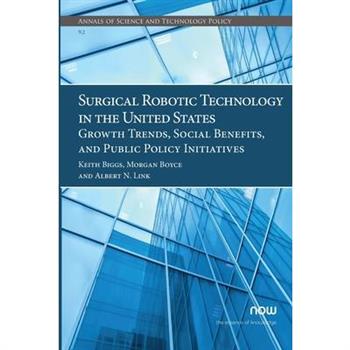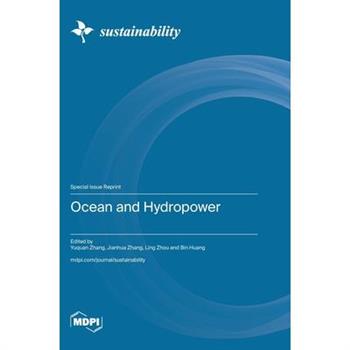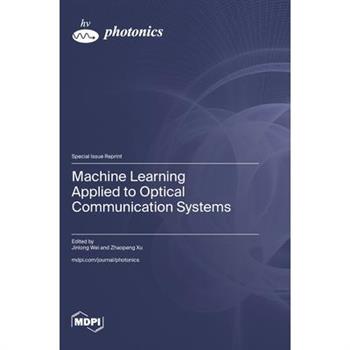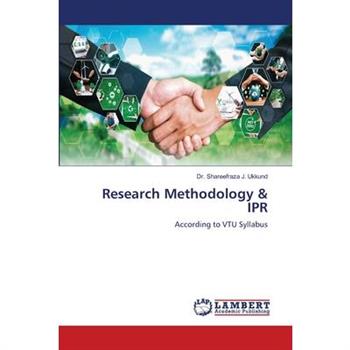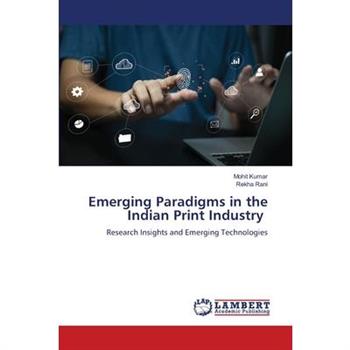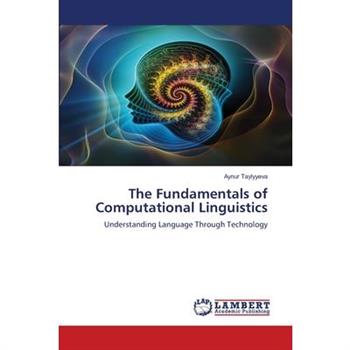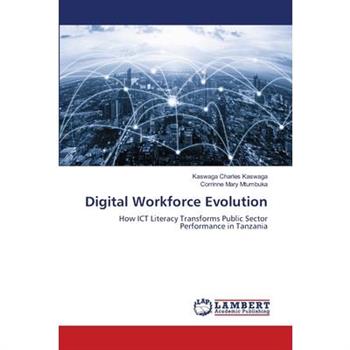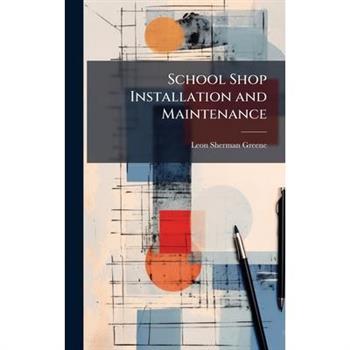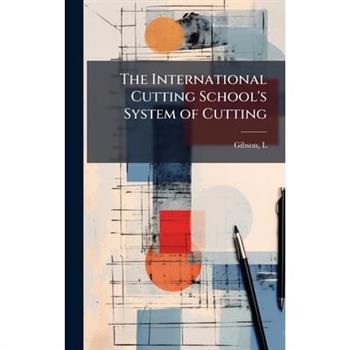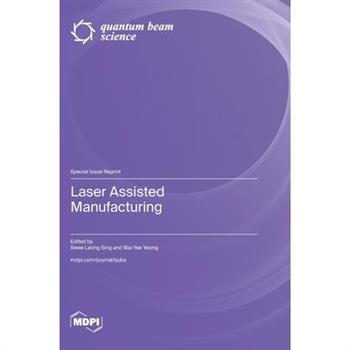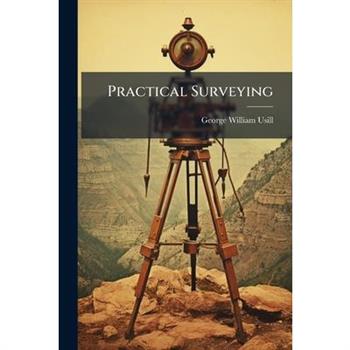Empire of the Sum
Starting with hands, abacus, and slide rule, humans have always reached for tools to simplify math. Pocket-sized calculators ushered in modern mathematics, helped build the atomic bomb, took us to the bottom of the ocean, and accompanied us to the moon. The pocket calculator changed our world, until it was supplanted by more modern devices that, in a cruel twist of irony, it helped to create. The calculator is dead; long live the calculator.In this witty mathematic and social history, Keith Houston transports readers from the nascent economies of the ancient world to World War II, where a Jewish engineer calculated for his life at Buchenwald, and into the technological arms race that led to the first affordable electronic pocket calculators. At every turn, Houston is a scholarly, affable guide to this global history of invention. Empire of the Sum will appeal to math lovers, history buffs, and anyone seeking to understand our trajectory to the computer age.
Surgical Robotic Technology in the United States
Surgical Robotic Technology in the United States details the evolution, growth, and diffusion of surgical robotic technology in the United States and globally. It begins with a historical overview of the development of surgical robots, highlighting key milestone events. The analysis covers the growth and adoption of these systems in U.S. hospitals as well as the global diffusion of systems. The role of public sector support through the Small Business Innovation Research (SBIR) program and the Small Business Technology Transfer (STTR) program is discussed, and an empirical analysis of the growth and diffusion of research funding related to surgical robotic technologies is provided. Following the empirical analysis of the aggregate level of surgical robotic technology, a specific technology is considered, namely the da Vinci surgical robotic system, and the growth and diffusion of that technology is also estimated. Following the discussion of the societal benefit of the technology, a framework for evaluating the ratio of social benefits to social costs of surgical robotic technologies is offered. Finally, the monograph concludes with a discussion of the role of public policy initiatives in supporting the diffusion and further development of surgical robotic technology.
Stability Control of Underground Openings under High Stress and Deep Mining Environment
This reprint aims to summarise the latest research on stability control in underground openings under high stress and those in deep mining environments. With this reprint, scientists, researchers and engineers can find the latest research results, outcomes and conclusions regarding stability control in underground openings. Moreover, engineers and operators can use this as a reference for the application of the latest research in in situ operations. Thereby, the stability of underground openings can be improved, and the safety of underground operators can be guaranteed.
Process Design and Modeling of Low-Carbon Energy Systems
This reprint addresses the urgent global challenge of decarbonizing energy systems while ensuring reliability, affordability, and sustainability. Curating 14 interdisciplinary studies, it bridges engineering, economics, and policy to advance renewable integration, carbon market mechanisms, energy storage, and socio-technical solutions. Key innovations include AI-driven prediction models like the IAO-LSTM for solar forecasting and the VMD-AOA-GRU hybrid model for wind power optimization, alongside robust dispatch frameworks leveraging pumped hydro storage and reinforcement learning. The issue also explores carbon-internalized thermoeconomic models, resilient multi-energy network planning, and nanomaterials such as nanoporous alumina sheets for anti-frosting applications. Contributions emphasize cross-sector integration (electricity-hydrogen-thermal networks), scalable technology deployment, and adaptive policy frameworks to align with sustainability goals. By synthesizing cutting-edge research, this collection provides actionable insights for policymakers, industry stakeholders, and researchers, highlighting pathways to overcome technical, economic, and regulatory barriers in the energy transition. Future directions call for deeper system coupling, industrial scalability of lab innovations, and equitable policy design to accelerate global decarbonization efforts.
Ocean and Hydropower
This Special Issue focuses on exploring the vast potential of ocean and hydropower energy technologies in contributing to the global energy transition and decarbonization efforts. It covers a wide range of topics, including the design, manufacturing, and optimization of tidal, wave, offshore wind, and hydropower energy converters; the hydro/aerodynamic properties of these systems; innovative control strategies; smart grid technologies; and novel offshore energy storage devices. This issue aims to bridge the gap between researchers and industry professionals, fostering collaboration and knowledge exchange to advance the development and commercialization of sustainable ocean and hydropower energy solutions. It is a valuable resource for academics, engineers, and policymakers interested in the future of renewable energy systems.
Artificial Ground Freezing Technology
Artificial ground freezing (AGF) has emerged as a versatile and sustainable geotechnical engineering technique, offering innovative solutions for ground stabilization, groundwater control, and environmental protection in challenging subsurface conditions. As urbanization and infrastructure demands grow, AGF's role in enabling safe excavations, tunneling, and contaminated site remediation has gained renewed significance. The following Special Issue explores cutting-edge advancements in AGF technology, from numerical modeling and thermal process optimization to case studies highlighting its application in extreme environments. By compiling interdisciplinary research, we aim to address critical challenges-energy efficiency, long-term performance, and climate adaptability-while fostering collaboration between academia and industry to shape the future of frozen ground engineering.
Machine Learning Applied to Optical Communication Systems
This reprint explores how machine learning is revolutionizing optical communication systems, featuring topics ranging from long-haul coherent links and short-reach IM/DD systems to PONs, VLC, and chaos-based secure communication. Covering neural network equalization, optical signal processing, and system-level intelligence, this collection highlights cutting-edge research and future directions at the intersection of AI and photonics.
Research Methodology & IPR
This book is designed to serve as a comprehensive guide for students, researchers, and professionals who want to deepen their understanding of engineering research and intellectual property rights. Drawing from my experience in teaching and research, I have focused on presenting core concepts in a clear and structured manner starting from the fundamentals of research methodology and ethics, moving through literature review techniques, and finally exploring the critical areas of patents, copyrights, trademarks, and more.My goal is to provide readers with practical knowledge that bridges theory and real-world application, helping them conduct research responsibly and protect their innovations effectively. Whether you are beginning your research journey or looking to enhance your expertise in intellectual property, this book aims to be a valuable resource to support your academic and professional growth.
Sensors for Air Quality Monitoring
Novel sensors to detect air pollutants like fine dust (PM10, PM2.5), O3, NO2, NO, or CO, as well as greenhouse gases like CO2, are currently available and have been widely used for atmospheric and indoor air monitoring. Although these sensors are small, lightweight, fast, and cheap, they can be relatively unstable and inaccurate. To address these limitations, further research is needed in the following areas: possibilities and shortcomings of new sensing techniques and applications; methodologies to overcome their disadvantages; solutions to integrate networks of these sensors into existing, well-calibrated air quality monitoring networks; solutions to use them for air quality monitoring; and their application in new tasks such as the detection of air pollution hot spots or the evaluation of emission inventories and numerical air pollution simulations. Environmental scientists, including physicians, chemists, and epidemiologists, play a vital role in defining the requirements for developing new sensors to detect harmful compounds in the atmosphere. The detection of personal air pollution exposure, and potentially personal pollen and fungi exposure in the future, is close to being elucidated and will form the basis for enhanced measures to improve human health.
Basics of Photogrammetry
Given the significant role that photogrammetry plays across a wide range of applications, both in engineering and beyond, and the invaluable services it provides, whether directly experienced or indirectly beneficial. There is nothing more worthwhile or beneficial than presenting this book to esteemed readers, whether they are passionate about photogrammetry or among our cherished students. This book comprises eight chapters. The first introduces the science of photogrammetry, definition, historical, branches, applications, units. The second delves into lenses and cameras, their types and interconnections. The third focuses on aerial photogrammetry, different types of aerial photos, design of photographic projects, and the geometric relationships, and their corresponding real-world representations. The forth provides three-dimensional vision, related instruments, techniques, and methods. The fifth offers a concise overview of oblique aerial photography and methods for calculating ground point coordinates. The sixth shifts to ground photogrammetry, coordinates can be derived from terrestrial photograph. The seventh includes solved examples, the eighth presents general exercises.
Emerging Paradigms in the Indian Print Industry
Emerging Paradigms in the Indian Print Industry offers a comprehensive examination of the Indian printing industry's evolution, current status, and projected trajectory. Grounded in extensive research, the book explores the impact of digital technologies, economic shifts, and consumer behaviour on traditional and modern printing practices. It presents key insights into market trends, technological disruptions, and the potential role of AI, sustainability, and automation in reshaping the sector. Designed for academicians, industry professionals, and policy-makers, this work provides valuable forecasts and strategic directions for navigating the dynamic future of print in India.
Advanced Studies on Steel Structures
Steel structure has been one of the most important and efficient structural forms in building construction, and this reprint focuses on experimental, numerical, and theoretical research related to the behavior of steel components or members, steel connections or joints, and steel frame structures and systems. This reprint contains studies regarding steel braces, steel beams and composite steel-concrete beams, concrete-filled steel tube columns, steel shear links, steel connections and joints, and steel domes used as tower roofs.
Photovoltaic Panel Integration Using Phase Change Material
This project explores the integration of phase change materials (PCMs) into photovoltaic (PV) panels to enhance their thermal regulation and overall performance. PCMs absorb and release latent heat during phase transitions, helping to maintain optimal operating temperatures, which in turn reduces thermal fluctuations and improves the electrical efficiency of solar cells. The design and fabrication of an integrated PV-PCM system are accompanied by experimental analysis, with results showing that PCM integration can lower PV panel temperatures by 10-20簞C, leading to a 5-15% increase in efficiency and extended panel lifespan due to reduced thermal cycling stress. While challenges such as PCM degradation, low thermal conductivity, and economic feasibility remain, potential solutions include the use of nanoparticle-enhanced PCMs and hybrid cooling systems. This technology offers a promising pathway toward more efficient, reliable, and sustainable solar energy systems.
Fake Social Media Profile Detection Using Machine Learning
In today's connected world, social media has become a vital part of our daily lives. From sharing updates and connecting with friends to exchanging ideas and accessing news, these platforms offer immense value. But alongside their popularity, a concerning issue has grown the rise of fake profiles. These accounts can be used for a variety of harmful activities spamming, phishing, spreading misinformation, manipulating opinions, or even harassing others. With millions of users online, it's nearly impossible to identify these profiles manually. This is where intelligent, automated systems come into play. This project focuses on using XGBoost (Extreme Gradient Boosting) a fast and powerful machine learning algorithm that is used to detect fake social media profiles. XGBoost is well-known for handling structured data and performing better than many traditional models, thanks to its boosting technique and inbuilt regularization that helps prevent overfitting. To train the model, we used a dataset containing various features gathered from public user profiles.
The Fundamentals of Computational Linguistics
This book offers a clear and comprehensive introduction to the field of computational linguistics-where language meets artificial intelligence. From the basics of syntax and semantics to cutting-edge deep learning models, it provides students and curious minds with the foundational tools to understand how machines process human language. Ideal for beginners, this guide bridges theory and application, making complex topics accessible and relevant in today's digital world.
Optimization Analysis of Speech Processing Based Alzheimer's Disease
Alzheimer's Disease (AD) creates memory loss and psychological decay; it is a neurologicalproblem, andneuro degenerative type of dementia, Alzheimer's occurs because of brain germdeath. The stature of brain gets shrinks with Alzheimer's - the tissue has increasingly minimumnerve germs connections. While they can't be seen or attempted in the living cerebrum impactedby AD, after death/post-mortem examination will constantly demonstrate minor fuses in thenerve tissue, called plaques and tangles:  Plaques - it is distinguished among the perishing cells in the mind - from the expansion ofa protein called beta-amyloid. Tangles - it is distinguished inside the cerebrum neurons-because of the crumbling ofanother protein, called tau.The unusual proteins bunches, in the cerebrum tissue are constantly instant with the disease, however there could be another fundamental procedure that is really causing the AD, andresearchers are not yet beyond any doubt. This kind of progression in brain nerves is seen indifferent scatters, and analysts need to discover something other than that there are preteenvariations from the norm - they additionally need to know how these grow.
Selective Crucial Aspects Analysis in Textiles
Sustainability, dye innovation and fabric life-cycle accessment (LCA) is emerging as a global trend and is becoming a proviso to the future of fashion industry. The popular textiles, clothing and fashion industries are considered as one of the most unsustainable business in the world, thus calling an urgent need for increased involvement by designing sustainable development. This current book is aimed to discuss various crucial aspects in textiles and fashions. The topics vary from biomimicry in textiles to the latest innovations in dyes: such as photochromic dye to comfort and longebility aspects of textile and fashion garments.
Digital Workforce Evolution
In an era where digital transformation shapes organizational success, understanding the impact of Information and Communications Technology (ICT) literacy on employee performance has become crucial for public sector institutions. This groundbreaking research explores the relationship between ICT proficiency and workforce effectiveness at Tanzania's Higher Education Students' Loans Board. Through comprehensive analysis of cognitive and technical proficiency, this study reveals how digital competencies influence organizational outcomes in developing economies. Drawing from extensive field research and empirical data, the book offers valuable insights for public sector leaders, policy makers, and HR professionals seeking to enhance organizational performance through digital literacy. Whether you're a public administrator, researcher, or technology implementation specialist, this essential guide provides actionable frameworks for building a digitally competent workforce in the modern public sector.
A History of Inventions and Discoveries, Tr. by W. Johnston. Vol. 1-3; 4, 2Nd Ed
Explore the fascinating evolution of human ingenuity in "A History of Inventions and Discoveries" by Johann Beckmann, translated by William Johnston. This comprehensive three-volume set (with the fourth volume in its second edition) delves into the origins and development of various inventions and discoveries that have shaped civilization. From groundbreaking technologies to everyday innovations, Beckmann's work offers a rich tapestry of historical context, exploring the social, economic, and cultural impacts of these advancements. Discover the stories behind the innovations that have propelled humanity forward, offering insights into the minds of inventors and the eras in which they lived. This meticulously researched historical account remains a valuable resource for historians, researchers, and anyone interested in the history of science, technology, and the human drive to innovate.This work has been selected by scholars as being culturally important, and is part of the knowledge base of civilization as we know it. This work was reproduced from the original artifact, and remains as true to the original work as possible. Therefore, you will see the original copyright references, library stamps (as most of these works have been housed in our most important libraries around the world), and other notations in the work.This work is in the public domain in the United States of America, and possibly other nations. Within the United States, you may freely copy and distribute this work, as no entity (individual or corporate) has a copyright on the body of the work.As a reproduction of a historical artifact, this work may contain missing or blurred pages, poor pictures, errant marks, etc. Scholars believe, and we concur, that this work is important enough to be preserved, reproduced, and made generally available to the public. We appreciate your support of the preservation process, and thank you for being an important part of keeping this knowledge alive and relevant.
A History of Inventions and Discoveries, Tr. by W. Johnston. Vol. 1-3; 4, 2Nd Ed
Explore the fascinating evolution of human ingenuity in "A History of Inventions and Discoveries" by Johann Beckmann, translated by William Johnston. This comprehensive three-volume set (with the fourth volume in its second edition) delves into the origins and development of various inventions and discoveries that have shaped civilization. From groundbreaking technologies to everyday innovations, Beckmann's work offers a rich tapestry of historical context, exploring the social, economic, and cultural impacts of these advancements. Discover the stories behind the innovations that have propelled humanity forward, offering insights into the minds of inventors and the eras in which they lived. This meticulously researched historical account remains a valuable resource for historians, researchers, and anyone interested in the history of science, technology, and the human drive to innovate.This work has been selected by scholars as being culturally important, and is part of the knowledge base of civilization as we know it. This work was reproduced from the original artifact, and remains as true to the original work as possible. Therefore, you will see the original copyright references, library stamps (as most of these works have been housed in our most important libraries around the world), and other notations in the work.This work is in the public domain in the United States of America, and possibly other nations. Within the United States, you may freely copy and distribute this work, as no entity (individual or corporate) has a copyright on the body of the work.As a reproduction of a historical artifact, this work may contain missing or blurred pages, poor pictures, errant marks, etc. Scholars believe, and we concur, that this work is important enough to be preserved, reproduced, and made generally available to the public. We appreciate your support of the preservation process, and thank you for being an important part of keeping this knowledge alive and relevant.
Practical Testing of Raw Materials
"Practical Testing of Raw Materials: A Concise Handbook for Manufacturers, Merchants, and Users of Chemicals, Oils, Fuels, Gas Residuals and Bye-Products, and Paper Making Materials, With Chapters On Water Analysis and the Testing of Trade Effluents" is a comprehensive guide to the methods and techniques used in the early 20th century for evaluating the quality and properties of various raw materials. Written by S. S. Dyson, this handbook offers practical advice for manufacturers, merchants, and users of chemicals, oils, fuels, and paper-making materials. The book provides detailed instructions on conducting tests, analyzing results, and understanding the implications of the findings. Special attention is given to water analysis and the testing of trade effluents, reflecting the growing awareness of environmental concerns at the time. This volume is a valuable resource for anyone interested in the history of industrial chemistry, materials science, and quality control practices.This work has been selected by scholars as being culturally important, and is part of the knowledge base of civilization as we know it. This work was reproduced from the original artifact, and remains as true to the original work as possible. Therefore, you will see the original copyright references, library stamps (as most of these works have been housed in our most important libraries around the world), and other notations in the work.This work is in the public domain in the United States of America, and possibly other nations. Within the United States, you may freely copy and distribute this work, as no entity (individual or corporate) has a copyright on the body of the work.As a reproduction of a historical artifact, this work may contain missing or blurred pages, poor pictures, errant marks, etc. Scholars believe, and we concur, that this work is important enough to be preserved, reproduced, and made generally available to the public. We appreciate your support of the preservation process, and thank you for being an important part of keeping this knowledge alive and relevant.
Practical Testing of Raw Materials
"Practical Testing of Raw Materials: A Concise Handbook for Manufacturers, Merchants, and Users of Chemicals, Oils, Fuels, Gas Residuals and Bye-Products, and Paper Making Materials, With Chapters On Water Analysis and the Testing of Trade Effluents" is a comprehensive guide to the methods and techniques used in the early 20th century for evaluating the quality and properties of various raw materials. Written by S. S. Dyson, this handbook offers practical advice for manufacturers, merchants, and users of chemicals, oils, fuels, and paper-making materials. The book provides detailed instructions on conducting tests, analyzing results, and understanding the implications of the findings. Special attention is given to water analysis and the testing of trade effluents, reflecting the growing awareness of environmental concerns at the time. This volume is a valuable resource for anyone interested in the history of industrial chemistry, materials science, and quality control practices.This work has been selected by scholars as being culturally important, and is part of the knowledge base of civilization as we know it. This work was reproduced from the original artifact, and remains as true to the original work as possible. Therefore, you will see the original copyright references, library stamps (as most of these works have been housed in our most important libraries around the world), and other notations in the work.This work is in the public domain in the United States of America, and possibly other nations. Within the United States, you may freely copy and distribute this work, as no entity (individual or corporate) has a copyright on the body of the work.As a reproduction of a historical artifact, this work may contain missing or blurred pages, poor pictures, errant marks, etc. Scholars believe, and we concur, that this work is important enough to be preserved, reproduced, and made generally available to the public. We appreciate your support of the preservation process, and thank you for being an important part of keeping this knowledge alive and relevant.
School Shop Installation and Maintenance
School Shop Installation and Maintenance, by Leon Sherman Greene, offers a detailed guide to establishing and maintaining effective school workshops. Originally published in 1922, this book provides practical advice on equipping and organizing school shops for vocational and technical training. Covering essential aspects such as layout planning, machinery installation, tool maintenance, and safety procedures, Greene's work is invaluable for educators and administrators seeking to create optimal learning environments. This historical text provides a fascinating look into the methods and best practices of early 20th-century vocational education, offering insights that remain relevant for contemporary technical programs. "School Shop Installation and Maintenance" serves as a valuable resource for understanding the evolution of industrial arts education and its continued importance in preparing students for technical careers.This work has been selected by scholars as being culturally important, and is part of the knowledge base of civilization as we know it. This work was reproduced from the original artifact, and remains as true to the original work as possible. Therefore, you will see the original copyright references, library stamps (as most of these works have been housed in our most important libraries around the world), and other notations in the work.This work is in the public domain in the United States of America, and possibly other nations. Within the United States, you may freely copy and distribute this work, as no entity (individual or corporate) has a copyright on the body of the work.As a reproduction of a historical artifact, this work may contain missing or blurred pages, poor pictures, errant marks, etc. Scholars believe, and we concur, that this work is important enough to be preserved, reproduced, and made generally available to the public. We appreciate your support of the preservation process, and thank you for being an important part of keeping this knowledge alive and relevant.
School Shop Installation and Maintenance
School Shop Installation and Maintenance, by Leon Sherman Greene, offers a detailed guide to establishing and maintaining effective school workshops. Originally published in 1922, this book provides practical advice on equipping and organizing school shops for vocational and technical training. Covering essential aspects such as layout planning, machinery installation, tool maintenance, and safety procedures, Greene's work is invaluable for educators and administrators seeking to create optimal learning environments. This historical text provides a fascinating look into the methods and best practices of early 20th-century vocational education, offering insights that remain relevant for contemporary technical programs. "School Shop Installation and Maintenance" serves as a valuable resource for understanding the evolution of industrial arts education and its continued importance in preparing students for technical careers.This work has been selected by scholars as being culturally important, and is part of the knowledge base of civilization as we know it. This work was reproduced from the original artifact, and remains as true to the original work as possible. Therefore, you will see the original copyright references, library stamps (as most of these works have been housed in our most important libraries around the world), and other notations in the work.This work is in the public domain in the United States of America, and possibly other nations. Within the United States, you may freely copy and distribute this work, as no entity (individual or corporate) has a copyright on the body of the work.As a reproduction of a historical artifact, this work may contain missing or blurred pages, poor pictures, errant marks, etc. Scholars believe, and we concur, that this work is important enough to be preserved, reproduced, and made generally available to the public. We appreciate your support of the preservation process, and thank you for being an important part of keeping this knowledge alive and relevant.
Surveying Manual; a Surveying
"Surveying Manual; a Surveying" by William David Pence, originally published in 1915, serves as a comprehensive guide to the principles and practices of surveying. This manual provides detailed instructions and practical advice for surveyors engaged in field work and office calculations. Covering essential topics such as measurement techniques, equipment usage, and data analysis, it offers a systematic approach to accurate land surveying.Designed for both students and practicing surveyors, this book emphasizes precision and thoroughness in surveying methods. The detailed explanations and illustrative examples make it a valuable resource for anyone seeking to master the art and science of surveying. This historical text provides insights into the surveying techniques of the early 20th century, offering a foundational understanding that remains relevant in modern surveying practices.This work has been selected by scholars as being culturally important, and is part of the knowledge base of civilization as we know it. This work was reproduced from the original artifact, and remains as true to the original work as possible. Therefore, you will see the original copyright references, library stamps (as most of these works have been housed in our most important libraries around the world), and other notations in the work.This work is in the public domain in the United States of America, and possibly other nations. Within the United States, you may freely copy and distribute this work, as no entity (individual or corporate) has a copyright on the body of the work.As a reproduction of a historical artifact, this work may contain missing or blurred pages, poor pictures, errant marks, etc. Scholars believe, and we concur, that this work is important enough to be preserved, reproduced, and made generally available to the public. We appreciate your support of the preservation process, and thank you for being an important part of keeping this knowledge alive and relevant.
The Seaman's Friend
The seaman s friend presents a detailed account of maritime knowledge intended to educate and guide individuals engaged in seafaring life. Focused on precision and structure, it offers a clear framework for understanding the essential workings of a vessel, from the layout of sails to the logic behind rigging systems. The book outlines the roles and responsibilities on board, emphasizing the importance of discipline, cooperation, and familiarity with nautical terms and tools. Rather than romanticizing sea life, it provides a practical lens through which readers can grasp the demands and routines of maritime labor. The guidance within reflects the values of order, safety, and accountability, serving both as a manual for daily conduct and a record of professional standards. Attention is also given to legal practices and customary expectations, indicating the complex intersection of maritime work with authority and tradition. The seamans friend acts as both instructional reference and ethical compass, bridging physical labor with institutional knowledge. Its thorough attention to technicality reveals the structured mindset necessary to navigate both ship and ocean. In doing so, it underscores the relationship between mechanical mastery and social order at sea.
Comminution and Comminution Circuits Optimisation
This reprint presents cutting-edge research on the comminution of mineral ores and the necessary tests for characterising the ore to understand its breakage requirements. It guides readers from the blasting stage to the milling stage, followed by the separation stage. The optimisation of the comminution stages covered in this reprint is made possible through an understanding of ore characteristics, which researchers have thoroughly assessed through breakage tests also described in the reprint. The effects of ore pre-treatment and the numerical assessments of comminution circuits are also investigated, with important insights drawn. The papers in this reprint were authored by leading experts in the field, making substantial contributions toward the achievement of sustainable comminution circuits.
Robust Parameter Estimation with Sensor Arrays in Complex Electromagnetic Environments
Sensor arrays have been widely applied in various fields, e.g., wireless communication, radar, and navigation. Key roles of sensor arrays include providing spatial parameter estimations and enhancing parameter estimation performances in other domains. However, with the present complex electromagnetic environment, general estimation methods experience significant performance degradations when encountering complex signal propagation, such as multipath or occlusion situations. Meanwhile, a sensor array system itself also suffers from uncertainties, such as gain-phase errors and mutual coupling, which are classic but long-term problems. In this Special Issue, we have collected a range of representative research works on this topic. In response to errors in the sensor array itself, such as random array deformations and mutual coupling, sparse array design and small-aperture antenna design methods are proposed. Meanwhile, from a parameter estimation perspective, conformal maps, element selection, and deep learning-based methods are proposed. In response to the received data errors caused by complex environments, such as multipath propagation and low signal-to-noise ratios, methods based on reweighted sparse sensing, pseudo noise resampling, Bayesian estimation, and multiphase filters are proposed. Furthermore, in response to the high complexity brought by robust processing algorithms, methods such as Taylor Compensation and dimensionality reduction are proposed. The relevant methods have shown excellent performance under complex system errors through simulation tests or actual tests.
Emerging Topics in High-Power Laser and Light-Matter Interactions
This Special Issue of Phototonics, "Emerging Topics in High-Power Laser and Light-Matter Interactions", presents a curated collection of cutting-edge research exploring the dynamic interplay between high-power laser technologies and light-matter interactions. The compilation encompasses advancements in laser source development, pulse manipulation, theoretical modeling, and novel sensing applications, offering insights into the latest experimental, theoretical, and computational methodologies. Key areas covered include high-power laser technology and applications, optical neural networks, fiber-optic sensing and communication, adaptive optics, short-pulse laser generation via nonlinear optics, Brillouin scattering, solid-state laser systems, spectral imaging, and quantum imaging and quantum optics. These topics are pivotal in advancing applications across industrial processing, biomedical imaging, and quantum information science. This Special Issue serves as a valuable resource for researchers, engineers, and technologists who are engaged in photonics, providing a comprehensive overview of current trends and future directions in high-power laser systems and light-matter interactions.
The International Cutting School's System of Cutting
Explore the intricacies of garment construction with "The International Cutting School's System of Cutting," a comprehensive guide originally published in 1913. This meticulously detailed manual, authored by L. Gibson, offers a fascinating glimpse into early 20th-century tailoring techniques. Delve into the precise methods and systematic approaches taught at the International Cutting School, providing valuable insights for historical fashion enthusiasts, students of design, and those interested in the evolution of garment making.This book serves as a practical resource, presenting a structured system for cutting and assembling various garments. Though originally intended for industrial application, the techniques can be adapted by anyone passionate about the art of sewing and pattern making. Discover the foundations of classic tailoring with this enduring work.This work has been selected by scholars as being culturally important, and is part of the knowledge base of civilization as we know it. This work was reproduced from the original artifact, and remains as true to the original work as possible. Therefore, you will see the original copyright references, library stamps (as most of these works have been housed in our most important libraries around the world), and other notations in the work.This work is in the public domain in the United States of America, and possibly other nations. Within the United States, you may freely copy and distribute this work, as no entity (individual or corporate) has a copyright on the body of the work.As a reproduction of a historical artifact, this work may contain missing or blurred pages, poor pictures, errant marks, etc. Scholars believe, and we concur, that this work is important enough to be preserved, reproduced, and made generally available to the public. We appreciate your support of the preservation process, and thank you for being an important part of keeping this knowledge alive and relevant.
Dictionarium Polygraphicum
Dictionarium Polygraphicum, Volume 2, by John Barrow, offers a comprehensive look at the arts and sciences as understood in the early 18th century. This encyclopedic work, "adorned with proper sculptures, curiously engraven on more than fifty copper plates," provides detailed explanations and illustrations of various techniques and materials. Covering a wide array of subjects from practical arts to emerging technologies, the "Dictionarium" serves as a valuable resource for understanding the state of knowledge during this period. This volume is a treasure trove for historians, researchers, and anyone interested in the evolution of technology and artistic practices. It provides insights into the methods, materials, and mindsets that shaped the world. This historic work is a fascinating snapshot of a time when the boundaries between art, science, and technology were still fluid and interconnected.This work has been selected by scholars as being culturally important, and is part of the knowledge base of civilization as we know it. This work was reproduced from the original artifact, and remains as true to the original work as possible. Therefore, you will see the original copyright references, library stamps (as most of these works have been housed in our most important libraries around the world), and other notations in the work.This work is in the public domain in the United States of America, and possibly other nations. Within the United States, you may freely copy and distribute this work, as no entity (individual or corporate) has a copyright on the body of the work.As a reproduction of a historical artifact, this work may contain missing or blurred pages, poor pictures, errant marks, etc. Scholars believe, and we concur, that this work is important enough to be preserved, reproduced, and made generally available to the public. We appreciate your support of the preservation process, and thank you for being an important part of keeping this knowledge alive and relevant.
Laser Assisted Manufacturing
Lasers play integral roles in many manufacturing techniques, such as laser-based powder bed fusion for metals (PBF-L/M), additive manufacturing (AM), and 3D printing. In this reprint of the Special Issue titled "Laser Assisted Manufacturing", nine articles are collated, highlighting the ongoing research efforts in this area. In their article, Pasang et al. investigated the use of a blue diode laser in the welding of titanium foils. Parfenov et al. studied the use of a laser for the cleaning and preservation of books and documents, as well as laser scanning and 3D printing for preservation efforts in heritage artefacts. In the area of conservation, Ruzankina et al. also looked into the laser treatment of monuments made from iron-based alloys. Confalonieri et al. explored the use of different process parameters in PBF-L/M of aluminium alloys, while Tajyar et al. used finite element analysis for the laser peening of these alloys. Finally, in their reviews, Kaligar et al. looked into a femtosecond laser applied in AM, Bachmann summarised the use of lasers in metal bending for rapid prototyping, and Aminzadeh analysed the use of process monitoring for a laser welding process.
Smart Public Safety Video Surveillance System
In smart cities, video surveillance is essential for public safety, evolving beyond simple camera installations and centralized monitoring due to the overwhelming amount of footage that challenges human operators. To enhance anomaly detection, experts have developed sophisticated computer vision techniques that classify events as normal or abnormal. Smart Public Safety Video Surveillance System explores an end-to-end urban video surveillance system, which aims to address asymmetric threats through three key strategies: firstly, it employs a corrective signal called "task-specific QoE" that considers contextual factors; secondly, it utilizes machine learningdriven predictive systems and a method known as "similarity-based meta-reinforcement learning" for effective anomaly detection; and thirdly, it advocates for "zero-touch" self-management systems based on autonomous computing. This holistic approach ensures rapid adaptation and situational awareness, effectively meeting the demands of modern businesses and enhancing overall safety in dynamic urban environments.
Welding and Joining Processes of Metallic Materials
The aim of this reprint is to immerse the reader in the advanced processes employed in material welding, joining, and additive manufacturing aspects. From the high-efficiency fusion of automated arc welding and laser welding to the precision layer-by-layer formation in additive manufacturing, welding technologies are continuously transcending traditional boundaries. In this reprint, leading experts in the field share their insights, research findings, and visions for the future. Together, we embark on a journey to unlock the full potential of the integration of intelligent sensors and real-time monitoring systems, seeking sustainable solutions that balance our insatiable need for enhanced process control and quality consistency with our responsibility to preserve the harmony of our planet's ecosystems. We pave the way towards a greener, more sustainable future, where these cutting-edge advancements drive high-performance structural welding manufacturing for industrial innovation and development.
Analysis of Strain, Stress and Texture with Quantum Beams, 2nd Edition
Quantum beams refer to neutrons and synchrotron radiation, and the facilities that use them are not familiar research methods. However, the micro-beams with high-brightness and high-energy X-rays have their penetrating power. The quantum beam has excellent capabilities for evaluating materials. Japan has the neutron facilities J-PARC and JRR-3, and the synchrotron radiation facility SPring-8. This reprint contains research articles that used these representative facilities in Japan. Specifically, it summarizes the latest research results on stress, strain, and texture using synchrotron radiation and neutrons in Japan. From of the perspective of materials, the works in this reprint cover a wide range of topics, not only including common metallic materials, but also coarse grains, welding materials, superconducting materials, construction materials, thermal barrier coatings, and composite materials. Measurement methods are based on diffraction. In terms of methodology, the time-of-flight method using neutrons, the double exposure method using synchrotron radiation suitable for coarse grains, the extended 3DXRD, and the constant penetration depth method are also included in this reprint. Numerical simulation techniques move into the mainstream in the evaluation of stress-strain of materials. However, when stress, strain, and texture are measured, the results of the numerical calculations differ from reality. As the saying goes, "seeing is believing"; science cannot advance with numerical calculations alone. By reading each of these papers, you should be able to find clues to solving the problems you are facing.
A Technological and Scientific Dictionary
"A Technological and Scientific Dictionary", compiled by George Frederick Goodchild and C.F. Tweney, is a comprehensive reference work from 1906. This dictionary serves as an invaluable resource for understanding the scientific and technological terms of the late 19th and early 20th centuries.Offering clear and concise definitions, the book covers a broad spectrum of subjects, making it an essential tool for students, professionals, and anyone with an interest in the history of science and technology. Its enduring value lies in its detailed explanations and its ability to provide historical context to the evolution of scientific and technical language.This work has been selected by scholars as being culturally important, and is part of the knowledge base of civilization as we know it. This work was reproduced from the original artifact, and remains as true to the original work as possible. Therefore, you will see the original copyright references, library stamps (as most of these works have been housed in our most important libraries around the world), and other notations in the work.This work is in the public domain in the United States of America, and possibly other nations. Within the United States, you may freely copy and distribute this work, as no entity (individual or corporate) has a copyright on the body of the work.As a reproduction of a historical artifact, this work may contain missing or blurred pages, poor pictures, errant marks, etc. Scholars believe, and we concur, that this work is important enough to be preserved, reproduced, and made generally available to the public. We appreciate your support of the preservation process, and thank you for being an important part of keeping this knowledge alive and relevant.
A Technological and Scientific Dictionary
"A Technological and Scientific Dictionary", compiled by George Frederick Goodchild and C.F. Tweney, is a comprehensive reference work from 1906. This dictionary serves as an invaluable resource for understanding the scientific and technological terms of the late 19th and early 20th centuries.Offering clear and concise definitions, the book covers a broad spectrum of subjects, making it an essential tool for students, professionals, and anyone with an interest in the history of science and technology. Its enduring value lies in its detailed explanations and its ability to provide historical context to the evolution of scientific and technical language.This work has been selected by scholars as being culturally important, and is part of the knowledge base of civilization as we know it. This work was reproduced from the original artifact, and remains as true to the original work as possible. Therefore, you will see the original copyright references, library stamps (as most of these works have been housed in our most important libraries around the world), and other notations in the work.This work is in the public domain in the United States of America, and possibly other nations. Within the United States, you may freely copy and distribute this work, as no entity (individual or corporate) has a copyright on the body of the work.As a reproduction of a historical artifact, this work may contain missing or blurred pages, poor pictures, errant marks, etc. Scholars believe, and we concur, that this work is important enough to be preserved, reproduced, and made generally available to the public. We appreciate your support of the preservation process, and thank you for being an important part of keeping this knowledge alive and relevant.
The Crown Glass Cutter's & Glazier's Assistant
"The Crown Glass Cutter's & Glazier's Assistant," originally published in 1815, is a detailed technical manual offering comprehensive guidance on the art and craft of glass cutting and glazing. This historical text, authored by John W. Hall, provides meticulous calculations for various sizes of glass squares and other geometric shapes, essential for artisans and craftsmen of the period. The book serves as a valuable resource for understanding early 19th-century techniques in glasswork, offering insights into the methods and tools used by crown glass cutters and glaziers. It is an invaluable resource for anyone interested in the history of technology, architecture, and the decorative arts, providing a rare glimpse into a specialized trade during the industrial revolution. This edition preserves the original text, offering both historical context and practical knowledge for modern readers.This work has been selected by scholars as being culturally important, and is part of the knowledge base of civilization as we know it. This work was reproduced from the original artifact, and remains as true to the original work as possible. Therefore, you will see the original copyright references, library stamps (as most of these works have been housed in our most important libraries around the world), and other notations in the work.This work is in the public domain in the United States of America, and possibly other nations. Within the United States, you may freely copy and distribute this work, as no entity (individual or corporate) has a copyright on the body of the work.As a reproduction of a historical artifact, this work may contain missing or blurred pages, poor pictures, errant marks, etc. Scholars believe, and we concur, that this work is important enough to be preserved, reproduced, and made generally available to the public. We appreciate your support of the preservation process, and thank you for being an important part of keeping this knowledge alive and relevant.
Silver Soldered Accessories for the Bathroom & Lavatory Created by the Brasscrafters
Explore the artistry and craftsmanship of silver soldered accessories for the bathroom and lavatory, as created by the renowned Brasscrafters. This book showcases the meticulous techniques and innovative designs employed by Eustis Manufacturing Co, a leader in the field. Delve into detailed illustrations and descriptions of their elegant and durable bathroom fixtures. Discover the timeless appeal of these handcrafted pieces that combine functionality with aesthetic beauty. A valuable resource for architects, designers, and anyone interested in the history and artistry of bathroom design.This work has been selected by scholars as being culturally important, and is part of the knowledge base of civilization as we know it. This work was reproduced from the original artifact, and remains as true to the original work as possible. Therefore, you will see the original copyright references, library stamps (as most of these works have been housed in our most important libraries around the world), and other notations in the work.This work is in the public domain in the United States of America, and possibly other nations. Within the United States, you may freely copy and distribute this work, as no entity (individual or corporate) has a copyright on the body of the work.As a reproduction of a historical artifact, this work may contain missing or blurred pages, poor pictures, errant marks, etc. Scholars believe, and we concur, that this work is important enough to be preserved, reproduced, and made generally available to the public. We appreciate your support of the preservation process, and thank you for being an important part of keeping this knowledge alive and relevant.
The Crown Glass Cutter's & Glazier's Assistant
"The Crown Glass Cutter's & Glazier's Assistant," originally published in 1815, is a detailed technical manual offering comprehensive guidance on the art and craft of glass cutting and glazing. This historical text, authored by John W. Hall, provides meticulous calculations for various sizes of glass squares and other geometric shapes, essential for artisans and craftsmen of the period. The book serves as a valuable resource for understanding early 19th-century techniques in glasswork, offering insights into the methods and tools used by crown glass cutters and glaziers. It is an invaluable resource for anyone interested in the history of technology, architecture, and the decorative arts, providing a rare glimpse into a specialized trade during the industrial revolution. This edition preserves the original text, offering both historical context and practical knowledge for modern readers.This work has been selected by scholars as being culturally important, and is part of the knowledge base of civilization as we know it. This work was reproduced from the original artifact, and remains as true to the original work as possible. Therefore, you will see the original copyright references, library stamps (as most of these works have been housed in our most important libraries around the world), and other notations in the work.This work is in the public domain in the United States of America, and possibly other nations. Within the United States, you may freely copy and distribute this work, as no entity (individual or corporate) has a copyright on the body of the work.As a reproduction of a historical artifact, this work may contain missing or blurred pages, poor pictures, errant marks, etc. Scholars believe, and we concur, that this work is important enough to be preserved, reproduced, and made generally available to the public. We appreciate your support of the preservation process, and thank you for being an important part of keeping this knowledge alive and relevant.
Victoria. Abstracts of Specifications of Patents Applied for From 1854 to 1866
"Victoria. Abstracts of Specifications of Patents Applied for From 1854 to 1866" offers a detailed look into the burgeoning world of 19th-century inventions and intellectual property in the Australian colony of Victoria. Compiled by William Henry Archer, this volume provides abstracts of patent specifications, offering a unique glimpse into the technological advancements and innovative spirit of the time.Researchers, historians, and anyone interested in the history of technology, Australian history, or the development of patent law will find this collection invaluable. It serves as a primary source for understanding the inventions that shaped Victoria's industrial landscape and the legal framework that supported them. This book illuminates the ingenuity and entrepreneurial drive of early inventors in Victoria.This work has been selected by scholars as being culturally important, and is part of the knowledge base of civilization as we know it. This work was reproduced from the original artifact, and remains as true to the original work as possible. Therefore, you will see the original copyright references, library stamps (as most of these works have been housed in our most important libraries around the world), and other notations in the work.This work is in the public domain in the United States of America, and possibly other nations. Within the United States, you may freely copy and distribute this work, as no entity (individual or corporate) has a copyright on the body of the work.As a reproduction of a historical artifact, this work may contain missing or blurred pages, poor pictures, errant marks, etc. Scholars believe, and we concur, that this work is important enough to be preserved, reproduced, and made generally available to the public. We appreciate your support of the preservation process, and thank you for being an important part of keeping this knowledge alive and relevant.
Practical Surveying
Practical Surveying, originally published in 1901, serves as a comprehensive text-book for students and professionals engaged in surveying, particularly those preparing for examinations or undertaking survey work in colonial settings. Written by George William Usill, this book offers a detailed and practical approach to the principles and methods of surveying. Covering a wide range of topics essential for effective surveying practice, including the use of surveying instruments, the calculation of areas and volumes, and the creation of accurate maps and plans. With clear explanations and numerous illustrative examples, "Practical Surveying" provides a solid foundation for understanding surveying techniques relevant to both historical context and enduring principles, making it a valuable resource for those interested in the history and practice of surveying.This work has been selected by scholars as being culturally important, and is part of the knowledge base of civilization as we know it. This work was reproduced from the original artifact, and remains as true to the original work as possible. Therefore, you will see the original copyright references, library stamps (as most of these works have been housed in our most important libraries around the world), and other notations in the work.This work is in the public domain in the United States of America, and possibly other nations. Within the United States, you may freely copy and distribute this work, as no entity (individual or corporate) has a copyright on the body of the work.As a reproduction of a historical artifact, this work may contain missing or blurred pages, poor pictures, errant marks, etc. Scholars believe, and we concur, that this work is important enough to be preserved, reproduced, and made generally available to the public. We appreciate your support of the preservation process, and thank you for being an important part of keeping this knowledge alive and relevant.
Exhibition ..., Volumes 18-19
Explore the rich history of American industry and innovation with "Exhibition ..., Volumes 18-19," a detailed record from the Massachusetts Charitable Mechanic Association in Boston. This volume offers a fascinating glimpse into the advancements, craftsmanship, and entrepreneurial spirit of the era. Documenting various exhibitions, it showcases the inventions, products, and skills that defined the industrial landscape.Delve into the meticulous accounts and discover the trends and developments that shaped the nation's economy and technological prowess. A valuable resource for historians, researchers, and anyone interested in the evolution of mechanics and manufacturing in the United States. This volume captures a pivotal period of American ingenuity.This work has been selected by scholars as being culturally important, and is part of the knowledge base of civilization as we know it. This work was reproduced from the original artifact, and remains as true to the original work as possible. Therefore, you will see the original copyright references, library stamps (as most of these works have been housed in our most important libraries around the world), and other notations in the work.This work is in the public domain in the United States of America, and possibly other nations. Within the United States, you may freely copy and distribute this work, as no entity (individual or corporate) has a copyright on the body of the work.As a reproduction of a historical artifact, this work may contain missing or blurred pages, poor pictures, errant marks, etc. Scholars believe, and we concur, that this work is important enough to be preserved, reproduced, and made generally available to the public. We appreciate your support of the preservation process, and thank you for being an important part of keeping this knowledge alive and relevant.
Practical Surveying
Practical Surveying, originally published in 1901, serves as a comprehensive text-book for students and professionals engaged in surveying, particularly those preparing for examinations or undertaking survey work in colonial settings. Written by George William Usill, this book offers a detailed and practical approach to the principles and methods of surveying. Covering a wide range of topics essential for effective surveying practice, including the use of surveying instruments, the calculation of areas and volumes, and the creation of accurate maps and plans. With clear explanations and numerous illustrative examples, "Practical Surveying" provides a solid foundation for understanding surveying techniques relevant to both historical context and enduring principles, making it a valuable resource for those interested in the history and practice of surveying.This work has been selected by scholars as being culturally important, and is part of the knowledge base of civilization as we know it. This work was reproduced from the original artifact, and remains as true to the original work as possible. Therefore, you will see the original copyright references, library stamps (as most of these works have been housed in our most important libraries around the world), and other notations in the work.This work is in the public domain in the United States of America, and possibly other nations. Within the United States, you may freely copy and distribute this work, as no entity (individual or corporate) has a copyright on the body of the work.As a reproduction of a historical artifact, this work may contain missing or blurred pages, poor pictures, errant marks, etc. Scholars believe, and we concur, that this work is important enough to be preserved, reproduced, and made generally available to the public. We appreciate your support of the preservation process, and thank you for being an important part of keeping this knowledge alive and relevant.
Victoria. Abstracts of Specifications of Patents Applied for From 1854 to 1866
"Victoria. Abstracts of Specifications of Patents Applied for From 1854 to 1866" offers a detailed look into the burgeoning world of 19th-century inventions and intellectual property in the Australian colony of Victoria. Compiled by William Henry Archer, this volume provides abstracts of patent specifications, offering a unique glimpse into the technological advancements and innovative spirit of the time.Researchers, historians, and anyone interested in the history of technology, Australian history, or the development of patent law will find this collection invaluable. It serves as a primary source for understanding the inventions that shaped Victoria's industrial landscape and the legal framework that supported them. This book illuminates the ingenuity and entrepreneurial drive of early inventors in Victoria.This work has been selected by scholars as being culturally important, and is part of the knowledge base of civilization as we know it. This work was reproduced from the original artifact, and remains as true to the original work as possible. Therefore, you will see the original copyright references, library stamps (as most of these works have been housed in our most important libraries around the world), and other notations in the work.This work is in the public domain in the United States of America, and possibly other nations. Within the United States, you may freely copy and distribute this work, as no entity (individual or corporate) has a copyright on the body of the work.As a reproduction of a historical artifact, this work may contain missing or blurred pages, poor pictures, errant marks, etc. Scholars believe, and we concur, that this work is important enough to be preserved, reproduced, and made generally available to the public. We appreciate your support of the preservation process, and thank you for being an important part of keeping this knowledge alive and relevant.
Exhibition ..., Volumes 18-19
Explore the rich history of American industry and innovation with "Exhibition ..., Volumes 18-19," a detailed record from the Massachusetts Charitable Mechanic Association in Boston. This volume offers a fascinating glimpse into the advancements, craftsmanship, and entrepreneurial spirit of the era. Documenting various exhibitions, it showcases the inventions, products, and skills that defined the industrial landscape.Delve into the meticulous accounts and discover the trends and developments that shaped the nation's economy and technological prowess. A valuable resource for historians, researchers, and anyone interested in the evolution of mechanics and manufacturing in the United States. This volume captures a pivotal period of American ingenuity.This work has been selected by scholars as being culturally important, and is part of the knowledge base of civilization as we know it. This work was reproduced from the original artifact, and remains as true to the original work as possible. Therefore, you will see the original copyright references, library stamps (as most of these works have been housed in our most important libraries around the world), and other notations in the work.This work is in the public domain in the United States of America, and possibly other nations. Within the United States, you may freely copy and distribute this work, as no entity (individual or corporate) has a copyright on the body of the work.As a reproduction of a historical artifact, this work may contain missing or blurred pages, poor pictures, errant marks, etc. Scholars believe, and we concur, that this work is important enough to be preserved, reproduced, and made generally available to the public. We appreciate your support of the preservation process, and thank you for being an important part of keeping this knowledge alive and relevant.
International Library of Technology
"International Library of Technology, Volume 93" is a comprehensive textbook designed for individuals involved in engineering professions, trades, or those seeking information in these fields. This volume, part of a larger series, provides detailed instruction and reference material. A valuable resource for vocational studies and self-improvement.This work has been selected by scholars as being culturally important, and is part of the knowledge base of civilization as we know it. This work was reproduced from the original artifact, and remains as true to the original work as possible. Therefore, you will see the original copyright references, library stamps (as most of these works have been housed in our most important libraries around the world), and other notations in the work.This work is in the public domain in the United States of America, and possibly other nations. Within the United States, you may freely copy and distribute this work, as no entity (individual or corporate) has a copyright on the body of the work.As a reproduction of a historical artifact, this work may contain missing or blurred pages, poor pictures, errant marks, etc. Scholars believe, and we concur, that this work is important enough to be preserved, reproduced, and made generally available to the public. We appreciate your support of the preservation process, and thank you for being an important part of keeping this knowledge alive and relevant.
Surveying Manual; a Surveying
"Surveying Manual; a Surveying" by William David Pence, originally published in 1915, serves as a comprehensive guide to the principles and practices of surveying. This manual provides detailed instructions and practical advice for surveyors engaged in field work and office calculations. Covering essential topics such as measurement techniques, equipment usage, and data analysis, it offers a systematic approach to accurate land surveying.Designed for both students and practicing surveyors, this book emphasizes precision and thoroughness in surveying methods. The detailed explanations and illustrative examples make it a valuable resource for anyone seeking to master the art and science of surveying. This historical text provides insights into the surveying techniques of the early 20th century, offering a foundational understanding that remains relevant in modern surveying practices.This work has been selected by scholars as being culturally important, and is part of the knowledge base of civilization as we know it. This work was reproduced from the original artifact, and remains as true to the original work as possible. Therefore, you will see the original copyright references, library stamps (as most of these works have been housed in our most important libraries around the world), and other notations in the work.This work is in the public domain in the United States of America, and possibly other nations. Within the United States, you may freely copy and distribute this work, as no entity (individual or corporate) has a copyright on the body of the work.As a reproduction of a historical artifact, this work may contain missing or blurred pages, poor pictures, errant marks, etc. Scholars believe, and we concur, that this work is important enough to be preserved, reproduced, and made generally available to the public. We appreciate your support of the preservation process, and thank you for being an important part of keeping this knowledge alive and relevant.






